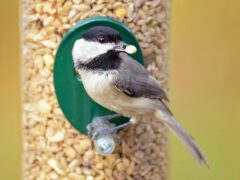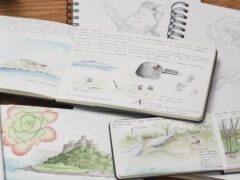Mexican Duck Photo Gallery
Male
A large dabbling duck. Male has a dark reddish-brown body, a lighter neck and head, and an olive-green to yellow bill.
© Ryan O'Donnell / Macaulay LibraryArizona, January 21, 2017Female
Female is similar to male, but typically has a dusky orange bill and is not as richly reddish-brown.
© Juan Miguel Artigas Azas / Macaulay LibrarySan Luis Potosí, January 17, 2023Male (with female Mallard)
A large dabbling duck, slightly smaller than a Mallard. Male (seen here courting a female Mallard) is a rich reddish-brown with a lighter head and neck and yellow bill.
© Tom Benson / Macaulay LibraryCalifornia, November 10, 2023Not all videos have soundMale
Speculum is blue, bordered by a white trailing edge and usually a white leading edge.
© Ryan O'Donnell / Macaulay LibraryArizona, November 02, 2017Male and female
Often found together in pairs, with bill color—orangeish in female, yellowish in male—the best way to tell the sexes apart.
© Manuel Becerril González / Macaulay LibraryCiudad de México, December 16, 2018Inhabits a variety of human-made and natural waterbodies.
© Daniela Souza / Macaulay LibraryCiudad de México, July 16, 2023Not all videos have soundFemale
Female bill color is variable, ranging from orange (with some dark marks) to drab olive.
© Manuel Becerril González / Macaulay LibraryCiudad de México, March 05, 2017Male and female
In flight, white underwing linings contrast with darker upperwings. The speculum is blue, bordered by a white trailing edge and narrow white leading edge (sometimes absent). Tail is dark.
© manuel grosselet / Macaulay LibraryCiudad de México, January 27, 2017Male
Occurs in virtually all areas with water, ranging from seasonal and permanent wetlands to reservoirs, irrigation canals, and other human-made water features.
© Patrick MONNEY / Macaulay LibraryArizona, April 16, 2014Don't miss a thing! Join our email list
The Cornell Lab will send you updates about birds,
birding, and opportunities to help bird conservation.




























































